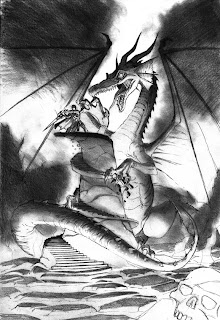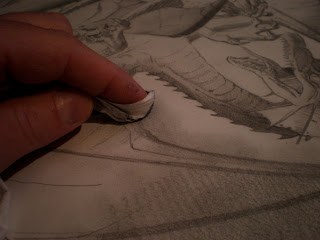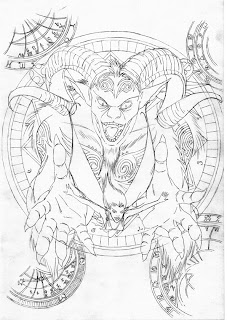For those of you wishing to complete , revise or redraw the final exercise of this term here is a recap.
For those of you who missed last weeks class on 7th December, this post provides a conclusion to the exercise that began in last weeks post.
Step 8
In the previous post the light source was established, in this case from below, and the appropriate shading was applied.
You will notice that the drawing has been adjusted. The dragon's wings are now fully extended and the ground details have changed slightly. The ground is now made up of broken rock and molten lava, creating the main source of light.

Step 9
Here the darker areas have been blended in with the lighter areas by carefully smudging the layers. If you are planning on doing the same, make sure the tissue is clean or if you are using your fingers, make sure they aren't greasy, or it will produce a grease stain that will be near impossible to remove.
Step 10
Once you have finished shading and blending, create the final highlights using an eraser and tidy up the outer lines, giving more definition to your figure work.

Feel free to e-mail me your results at flameboy_1@ntlworld.com or post them on facebook and I will comment back.
Have a great Christmas and it will be great to see you all next year.




























































































































